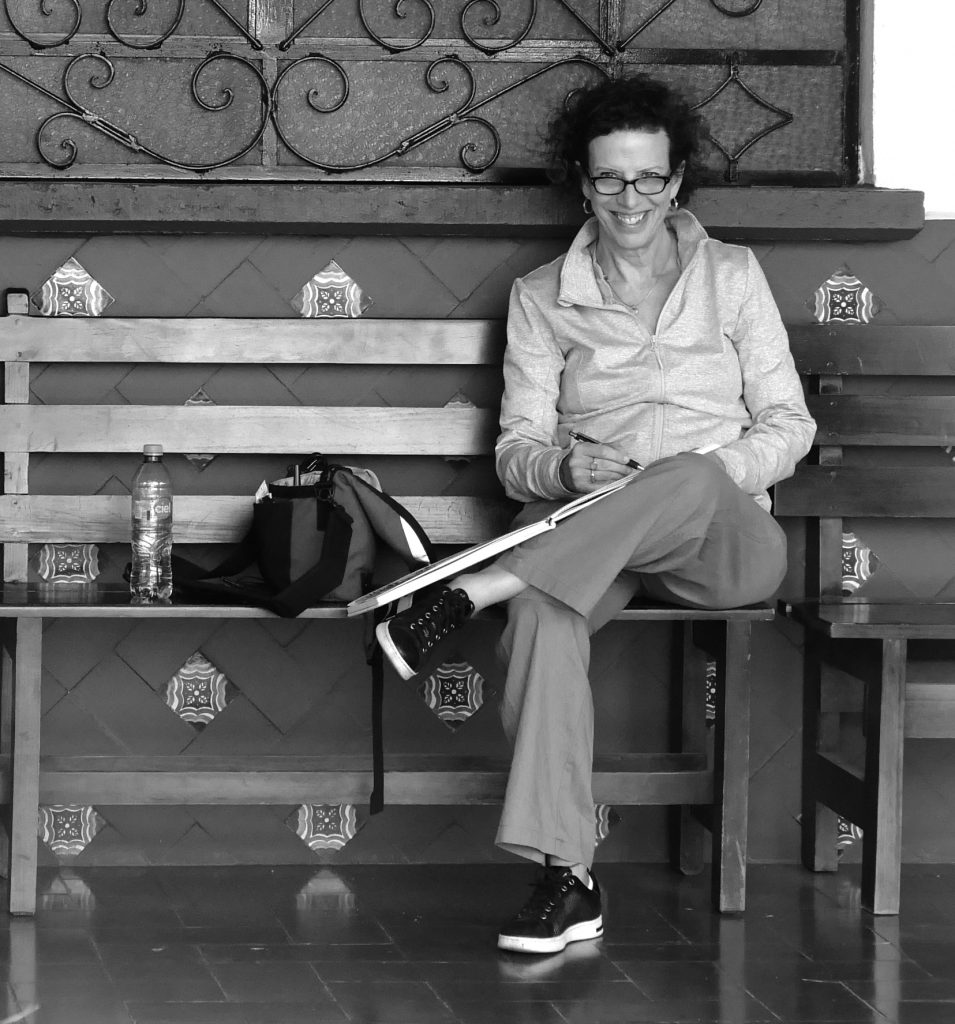
Shari Blaukopf is a teacher, graphic designer, and painter from Montreal, Canada. I’ve been subscribed to her blog for many years and I’ve featured her paintings of Delicate Arch and The Methow Valley. So I’m very excited to share this thoughtful interview with her. She was very gracious with her answers and she motivates me to get outside and paint. I urge you to check out her website, her work, her courses, and her videos after you’ve read the interview.
Thank you for taking the time to answer a few questions. Let’s start at the beginning… you start art at an early age, you were a graphic designer, a teacher, and now you’re painting. Can you tell me a bit about that journey?

Of course. I was actually a watercolour painter before any of that. I began painting in watercolour when I was in my early teens, with a local teacher here in Montreal. But my first introduction to plein air painting came when I studied with the great teacher Edgar A. Whitney. He gave summer workshops in Kennebunkport, Maine, and I was lucky enough to attend a few of those when I was in university. His design-based approach to painting meshed well with the design ideas I was learning in my graphic design studies at Concordia University in Montreal. I had never been part of a workshop experience before Whitney’s classes — starting with a critique in the morning, followed by a demo, and then a full afternoon of painting on location, as well as lots of camaraderie among the group. So it was a real immersion course in watercolour and the group culture surrounding it. More than anything else, that’s what launched my lifelong love of watercolour. I took a long break from painting when my two sons were growing up but I got back into it in 2011.
What about the medium of watercolor draws you to it?
The sheer unpredictability of watercolour is what keeps me coming back. No matter how many paintings I do, I never feel completely in control. Each time I paint, I’m surprised by what happens on the paper. Sometimes I feel that one area of the painting is successful but not another. I think that mastering the dark areas of a painting are the most challenging — keeping them fresh and not overworked. For the most part, I paint from light to dark but every so often I’ll start with the darks because if you put the darkest tones down on virgin white paper, they often remain fresh and clean, as opposed to putting them down on top of other colours. I do go through a lot of paper, and I’m mostly not happy with my finished work. But once in a while a painting seems to paint itself, meaning that the composition is dynamic, every mark I put down is the right colour and value, and there are no overworked areas. I can count those paintings on the fingers of one hand. They keep me going.
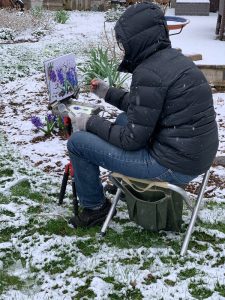
On your blog’s “About†page you describe the desire to be out from behind a computer and painting outside! As someone that has been working online since 1994, I also value my time to paint outdoor. What pulls you to do so much painting and sketching in plein air?
Part of what I learned about painting outdoors, all those years ago, was how to compose on site: This means looking at the broadest view in front of me and making critical decisions about what to include to produce the most interesting design on the page. For me, transposing a three-dimensional world to a flat surface is where the excitement and challenge begin. And, of course, the full immersive experience of having your senses continuously engaged by shifting light, breezes blowing your paper about and drying the paint quicker than expected — all of it gives you an extra charge of urgency. This often translates into a fresher painting than one that’s painted in studio over a longer period of time in a controlled environment. The studio result may be more polished but, to my eye at least, it lacks the spark you can only achieve outdoors.
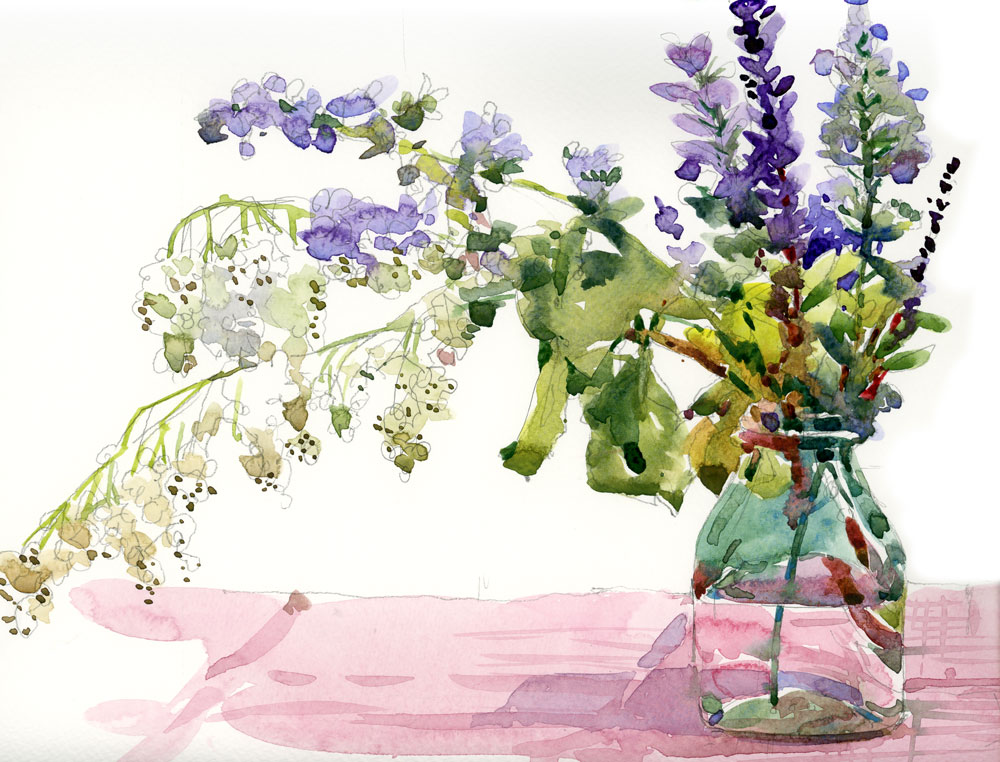
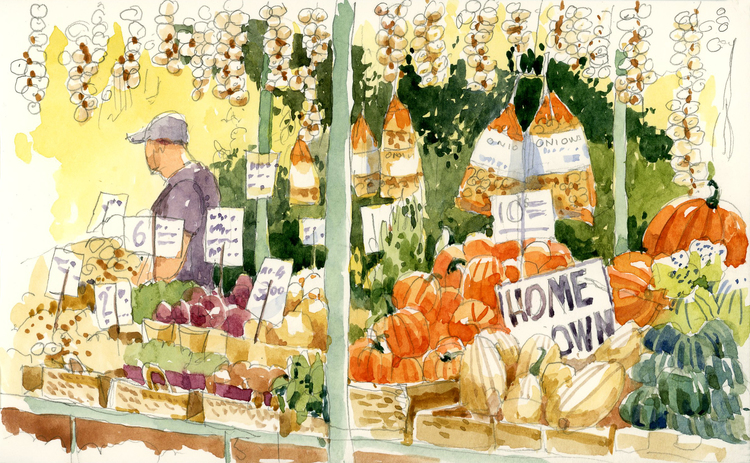
You contribute to the Urban Sketchers blog. What has being part of that community meant to you?
I discovered Urban Sketchers through their international blog in 2011 and have been part of that community ever since. In 2012 I co-founded our local chapter here in Montreal, with my friend Marc Taro Holmes (You can also read The Watercolor Gallery’s interview with Holmes), and that was the year I also attended my first USk Symposium in Santo Domingo. When I first discovered the Urban Sketchers blog online, I couldn’t believe the variety of work from sketchers all around the world. Up to that point in my painting career, a sketch was simply a preparatory drawing for a larger watercolour painting. But through the USk lens, I realized that a sketch could be much more than that. It was a way to tell a story, to share your corner of the world with others, to document an important event, or simply to capture a moment in your day. What made it so exciting for me was that people were actually drawing on location, something that I hadn’t done in years. And since I was teaching full-time in a college back then, it was an entirely feasible way to get back into drawing because it didn’t require a large chunk of time in my day to do a quick sketch.
Since attending that first symposium in Santo Domingo, I’ve taught at seven international symposia and given many workshops under the Urban Sketchers Education umbrella, as well as volunteering on the USk Education Committee.

I took some time to enroll in one of your courses. It is obvious you spent time as a teacher. But you also seem adept at making great quality video courses too. At this point what draws you to teaching art instead of just painting for yourself?
That’s a great question. And thanks for having a look at my courses. I love teaching and I guess it’s something that comes naturally to me. I made the career switch from college graphic design teacher to urban sketching teacher a few years ago, and I’ve never looked back. I had been thinking of creating my own online courses for some time, but with all the travel and preparation that goes into giving workshops, I never had a big enough chunk of time. Of course, the pandemic changed all that. Suddenly I had loads of time! Which meant I could finally create the courses I’d been thinking about, and still leave plenty of time to get out and paint for myself.
You list some of your tools on your blog. Are you a gear person? Or do you think that you can make good art with whatever you have with you?
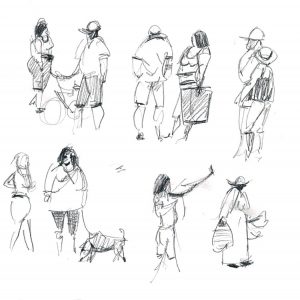
I am definitely a gear person. I think most people in the Urban Sketching community are too. We all love to try out the latest pens and newest sketchbooks. But you really don’t need all that much to make good art. I always carry a really small sketchbook and a pencil in my bag so that I can draw anywhere — at the grocery store checkout, in a dentist’s office or even while I’m a waiting for my food in a restaurant. That said, I have dozens of watercolour brushes, drawers full of pigments and an embarrassing number of pens. I do believe in quality materials for painting, especially good watercolour paper. And it never hurts to have one really great watercolour brush.
Can you share a recent painting you’ve done and tell us a bit about why you made it, the process, the location, etc?
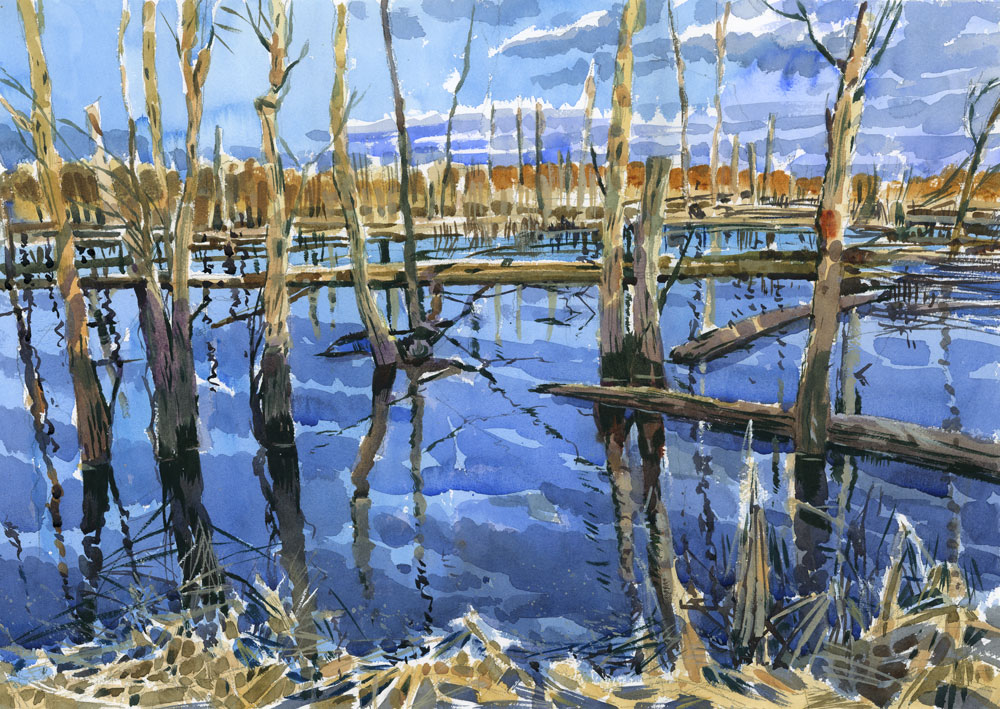
A friend recently told me about Montreal’s Technoparc Oiseaux, a large wetland and forest area that’s home to dozens of species of birds. Since then, I’ve often found myself drawn to a marshy spot that’s also the favourite haunt for geese, herons and many varieties of duck. It’s ringed with dead and fallen trees, which make for fascinating reflections in all weather. The spot is next to an industrial area and not far from the airport, but once you begin sketching you pretty much forget about all that and become fully immersed in seemingly wild nature. I took a walk there with my sketchbook on a chilly late-November day, and returned to my studio to make a half-sheet watercolour “Wetlands,†guided by the still-fresh memory of the autumn light. I tried to convey the sense of distance across the calm water, and to contrast the warm trees with the cool blues of water and sky.
Lastly, do you have any inspirations that you’d like to share with others? This can be artists, blogs, YouTube channels, etc.
I spend quite a bit of time looking at working artists on social media. There are too many to name here, but a few standouts are: Mike Kowalski, for the way he captures light and integrates figures into his paintings; Donald Colley, for his amazing people sketches; and Tom Hoffman for his bold watercolour marks. Over the years I’ve also amassed a collection of books by my favourite artists: David Hockney, Charles Reid, Barry Van Dusen, James Gurney (You can read The Watercolor Gallery’s interview with Gurney), John Yardley, David Curtis, Trevor Chamberlain, Frank Webb and Lucy Willis. But there are so many more, and I think you can learn something from studying every person’s work.
Thanks so much for this opportunity to answer some questions Colin. It’s been great to share a bit of my process with you.
—
How can you not be inspired to paint after reading Shari’s answers, looking at her work, and also the work of those that inspire her. Thanks again to her for taking the time to share her insights and experiences with us. Be sure to check out Shari’s website and all of the links she has on there.
